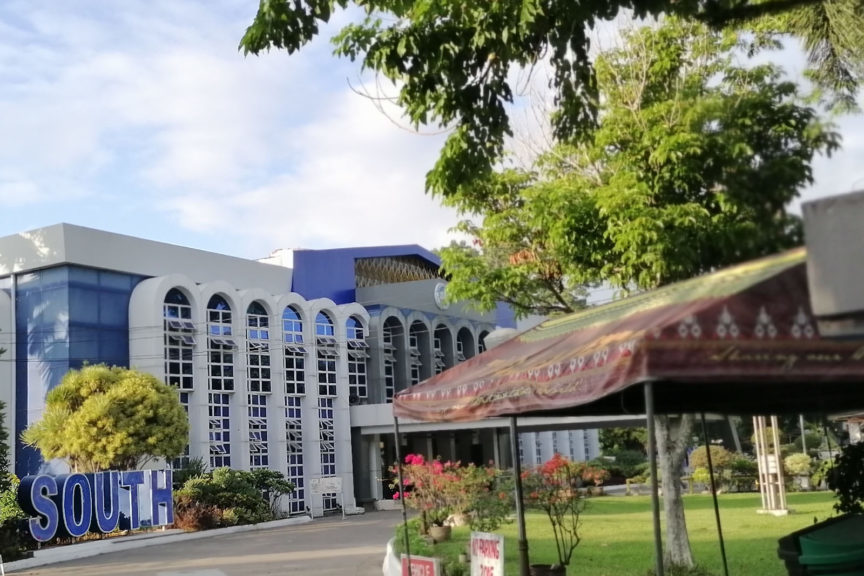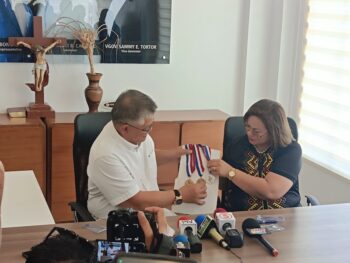 The South Cotabato provincial capitol in Koronadal City. MindaNews photo by BONG S. SARMIENTO
The South Cotabato provincial capitol in Koronadal City. MindaNews photo by BONG S. SARMIENTO
GENERAL SANTOS CITY (MindaNews / 02 August) – The provincial government of South Cotabato has intensified control measures in its borders in the wake of the threats posed by the spread of the coronavirus disease 2019 (COVID-19) Delta variant.
South Cotabato Gov. Reynaldo Tamayo, Jr. directed the move on Monday through Executive Order (EO) No. 30, which extended the implementation of general community quarantine (GCQ) in the province until August 31.
He said there is a need to sustain the strict border control measures and curtail the movement of people to prevent the entry and spread of the highly contagious COVID-19 variant.
The provincial government, through the South Cotabato Police Provincial Office, maintains checkpoints in its border highways to properly monitor and control the movement of residents as well as travelers.
“The continuing rise of COVID-19 cases and the worsening threat of the Delta variant have placed the province as one of the high-risk areas in the country,” Tamayo cited in the EO.
The national Inter-Agency Task Force for the Management of Emerging Infectious Diseases extended on July 29 the implementation of GCQ in the province and other parts of Region 12 due to the Delta variant threat.
Under EO 30, the governor said the movement of people are limited to accessing goods and services, for work and other essential transactions, and the curfew from 10 p.m. to 5 a.m. will remain in effect.
He said gatherings outside and within residences are still prohibited, and only those that are essential for the provision of health services, government services and humanitarian activities authorized by government agencies would be allowed.
Religious gatherings and related activities are allowed at 30 percent venue capacity while business establishments may continue to operate, subject to the strict observance of the minimum health protocols and other regulations.
As of Sunday night, the confirmed COVID-19 infections in the province since last year already reached a total of 9,110, with 261 deaths and 8,225 recoveries.
The cumulative active cases in the 10 municipalities and lone city have dropped to only 623 after peaking at over 1,800 last June.
But Tamayo clarified in the provincial government’s radio program “Ang Gobernador kag ang Katawhan” that the current case record does not reflect the actual situation on the ground due to the limited testing activities.
He said the province’s co-managed molecular laboratory had run out of test cartridges and all collected samples in the area are being sent to the Cotabato Regional Medical Center in Cotabato City, which takes several days to process.
Tamayo said some local government units have shifted to antigen testing to screen suspected and probable patients and subject them to isolation and treatment if they turn out positive.
But he said these are not included in the Department of Health’s inventory of cases, which counts infections confirmed through reverse transcription-polymerase chain reaction testing.
“With that situation, our cases are still alarming here in the province. The infections are rising but most of them are not (officially) recorded,” he said. (MindaNews)
